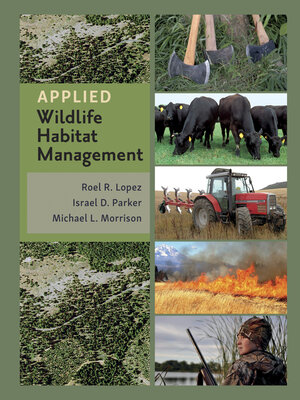Applied Wildlife Habitat Management
ebook ∣ Texas A&M AgriLife Research and Extension Service Series
By Roel R. Lopez

Sign up to save your library
With an OverDrive account, you can save your favorite libraries for at-a-glance information about availability. Find out more about OverDrive accounts.
Find this title in Libby, the library reading app by OverDrive.



Search for a digital library with this title
Title found at these libraries:
| Library Name | Distance |
|---|---|
| Loading... |
This introductory textbook to wildlife habitat ecology and management offers students and practitioners the basic tools to understand, plan, implement, measure, analyze, and document efforts to improve habitat for wildlife.
Providing a step-by-step guide that is adaptable to a range of environmental settings, the authors first lay out the ecological principles applicable to any project. They then take the reader through various sampling designs, measurement techniques, and analytical methods required to develop and complete a habitat project, including the creation of a report or management plan. The authors emphasize key management concepts and provide exercises putting ecological principles into practice. Case studies identify emerging issues that are changing and complicating wildlife habitat management. These include large-scale ecological concerns and their social and political challenges—global climate change, the decline in water quality and availability, loss and fragmentation of habitat, broadening invasive species and diseases, increased human-wildlife conflicts, and urbanization.
This practical guide is an invaluable reference for students, land managers, and landowners who are developing and implementing management plans for habitat modification and improvement on both private and public lands.
Providing a step-by-step guide that is adaptable to a range of environmental settings, the authors first lay out the ecological principles applicable to any project. They then take the reader through various sampling designs, measurement techniques, and analytical methods required to develop and complete a habitat project, including the creation of a report or management plan. The authors emphasize key management concepts and provide exercises putting ecological principles into practice. Case studies identify emerging issues that are changing and complicating wildlife habitat management. These include large-scale ecological concerns and their social and political challenges—global climate change, the decline in water quality and availability, loss and fragmentation of habitat, broadening invasive species and diseases, increased human-wildlife conflicts, and urbanization.
This practical guide is an invaluable reference for students, land managers, and landowners who are developing and implementing management plans for habitat modification and improvement on both private and public lands.







